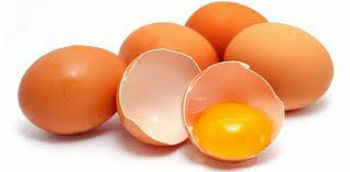Often, to describe a child's behavior, we use expressions and adjectives such as “on 220”, “there is a carpenter”,"live in the moon world", “not for quiet”, “stabanada” or “avoada”, among others.
In some cases, these are just a child's personality traits. In others, however, they may be signs of ADHD. But to what extent can this be considered normal and when is it an indication of something more serious?
Next, you check what is ADHD, its symptoms and how it affects children's learning process.
Index
- What is ADHD?
- ADHD causes
- ADHD symptoms
- ADHD and learning
- ADHD diagnosis
- ADHD treatment
What is ADHD?
ADHD is the acronym for Attention Deficit Disorder with Hyperactivity. It is a neurobiological disorder that begins to manifest itself in childhood. As the name suggests, it is characterized by lack of attention, hyperactivity and impulsivity.
It is more common among children and adolescents, affecting between 3 and 8% of the population in this age group. In approximately half of cases, ADHD remains throughout life, albeit in a milder form.
Although recognized by the World Health Organization (WHO), this disorder is still surrounded by prejudices. This is because many people believe it is impolite or willful disinterest, which is not the case.
ADHD causes
Studies indicate that external factors such as culture, parental behavior, child rearing and education are not causes of ADHD.
The most frequent cause of ADHD is related to genetics. In patients with the disorder, there is an alteration in the functioning of neurotransmitters, responsible for transmitting information between the neurons.
In this way, the connection with the frontal region of the brain, whose function is to control behavior, attention, memory and the ability to organize and plan, is impaired, giving rise to the disorder.
Studies indicate that environmental and biological factors can also cause ADHD, such as nicotine and alcohol consumption in pregnancy, low birth weight, intoxication by lead and brain abnormalities.
ADHD symptoms
the main ADHD symptoms they are inattention, motor restlessness, impulsiveness and hyperactivity. In general, boys tend to be more impulsive and hyperactive than girls. However, inattention manifests itself equally in both sexes.
In adults, ADHD causes difficulties in daily life, especially at work, due to memory failure, restlessness and instability. It can also give rise to associated problems such as excessive consumption of alcohol and drugs, anxiety and depression.
- Free Online Inclusive Education Course
- Free Online Toy Library and Learning Course
- Free Online Math Games Course in Early Childhood Education
- Free Online Pedagogical Cultural Workshops Course
ADHD and learning
Usually, the first signs of ADHD are noticed at school, when reasoning, concentration and memory become more explored in the learning process and children with the disorder may have low grades and problems when performing activities.
The signs of ADHD that can be observed in students are difficulty concentrating for prolonged periods, frequent errors due to lack of attention, organizational problems, loss of objects, excessive agitation, not sitting for a long time, between others.
In addition, children and adolescents with ADHD may have difficulties related to imposition of rules and limits, which causes problems in behavior and interaction with colleagues and teachers.
However, it is important to emphasize that children with ADHD are just as creative and intelligent as others. The difficulties are caused only by the disorder and, with the proper treatment and teaching method, school performance tends to improve.
ADHD diagnosis
Because it has such varied symptoms and similar to those of other disorders, such as autism and dyslexia, O ADHD diagnosis can be tricky.
In general, it is possible to identify ADHD when a child manifests symptoms of inattention and hyperactivity for periods longer than six months. As for intensity, the disorder can present a mild, moderate or severe degree.
Regarding the types of symptoms that manifest themselves, ADHD can be classified into three types: hyperactive, inattentive or combined (when the individual shows signs of both hyperactivity and inattention).
ADHD treatment
Although there is no cure, it is possible to live with the disorder, providing well-being and quality of life for patients.
O ADHD treatment consists mainly of multidisciplinary support with professionals from various fields, such as psychologists, speech therapists and pedagogues.
In some cases, the use of medications with a calming effect is recommended to minimize symptoms of hyperactivity and impulsivity.
Simple habits can also increase the effectiveness of the treatment, such as practicing regular physical activities and maintaining a healthy diet, reducing the consumption of sugar and caffeine.
Read too:
- Pervasive Developmental Disorder - What is it, symptoms and treatment
- 13 Amazing movies to learn more about autism
- Why must learning spaces change?
The password has been sent to your email.



